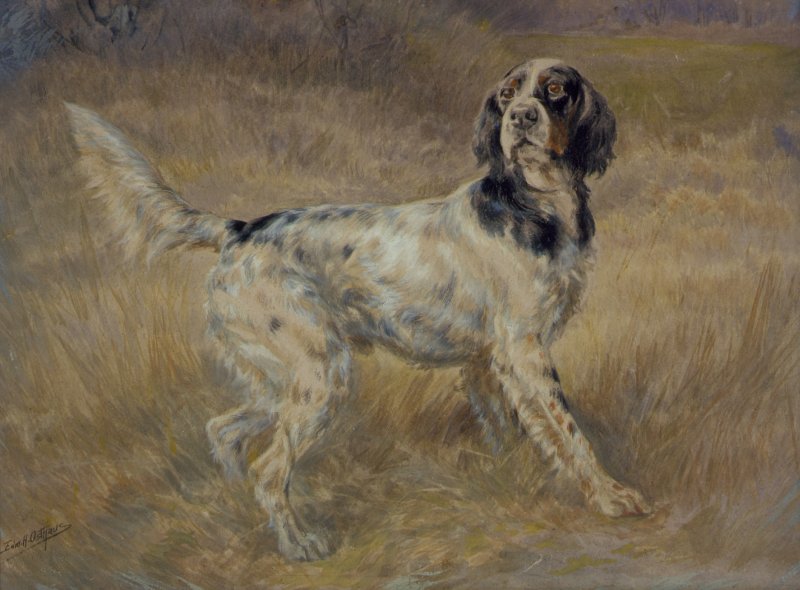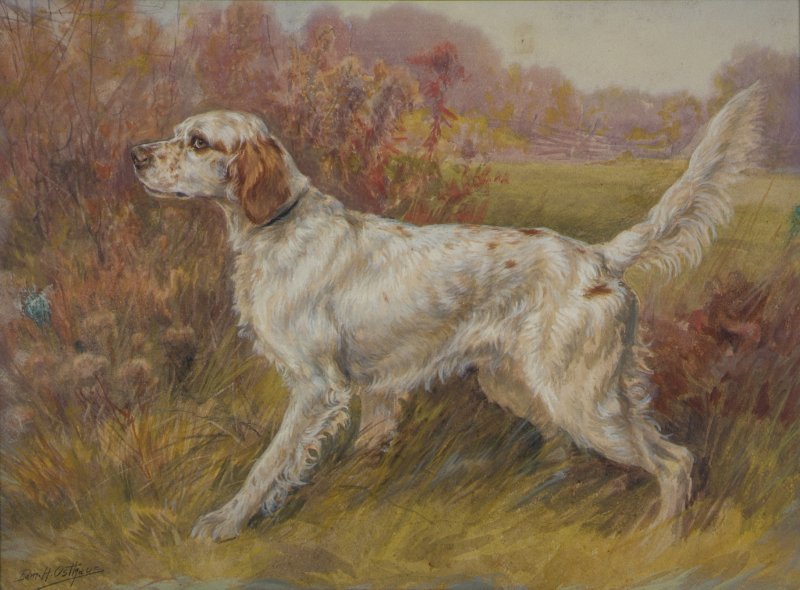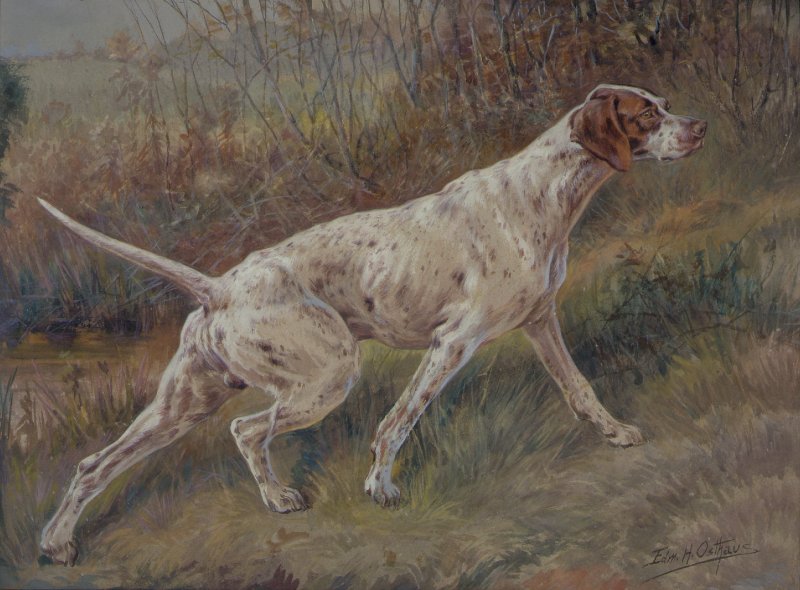As I looked around for an article topic during the dog days of summer, I thought why not focus on dog artifacts in the museum collection? What immediately drew my attention was a group of thirteen framed watercolor paintings of sporting or bird dogs beautifully portrayed in their hunting stances.
You might ask why Hagley has paintings of dogs? They're part of the 1954 DuPont Museum Collection that established Hagley’s collections. Split into both the museum and library’s collections, it represents the early history of DuPont. The dog paintings specifically were used as advertising artwork; which in this case was used to promote the use of smokeless gunpowder for hunting.

These dogs represent the National Field Trial Champions (or the National Bird Dog Championship) from 1896 to 1910. Included are the first winner “Count Gladstone IV (1896); “Tony’s Gale” (1898), “Joe Cumming” (1899); “Lady’s Count Gladstone” (1900); “Sioux” (1901, 1902); “Geneva” (1903); “Mohawk” (1904); “Alambaugh” (1905); “Pioneer” (1906); “Prince Whitestone” (1907); “Count Whitestone II” (1908); “Manitoba Rap” (1909); and “Monora” (1910). The 1897 event was canceled due to weather. All were Llewellin English setters except for “Manitoba Rap” who was an English pointer.

Well-known sporting artist Edmund Henry Osthaus (1858-1928) was the artist of these paintings. Born in Germany, Osthaus immigrated to the United States in 1883. He became the Chief Instructor for the Toledo Academy of Fine Arts in Ohio and later was promoted to Director from 1886-1893.
One of his hobbies was hunting with bird dogs. He was the founder of the National Field Trial Association in 1895 and served as a trial judge. It was his familiarity with these hunting dogs that led to his specialty of painting portraits of setters and pointers in lifelike hunting poses.
Osthaus began to work for DuPont in the late 1890s and produced hunting dog paintings for their advertising.
DuPont used these paintings in several ways. The best-known example is “The Champions” a highly collectable set of thirteen advertising postcards produced in 1916. All are marked “Shoot DuPont Powders.” The Hagley Library has copies of the postcards (see their finding aid).

They also appeared on annual DuPont calendars. The 1898 winner “Tony’s Gale” was featured on the 1936 calendar; 1899 winner “Joe Cumming” on the 1908 and 1936 calendars; 1909 winner “Geneva” on the 1909 calendar and 1910 winner “Monora” on the 1913 calendar. The paintings were also used on DuPont envelope covers and lithographs suitable for framing. Much of this was used as customer giveaways to promote their products.
We plan to add these paintings to on our online museum collection this fall. Once they're added, you'll be able to find them under the "DuPont Company" category.
Debra Hughes the Curator of Collections and Exhibits at Hagley Museum and Library.
